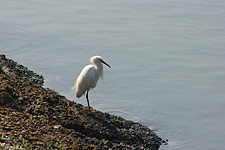Ocean Ecosystems and Habitats
A Key Piece of the Maintenance of a Healthy Global Biosphere

The balance and overall health of life on Earth relies on a healthy global biosphere. The global biosphere encompasses all of Earth’s living realms, is made up of all of its ecosystems, and relies on the continual healthy functioning of those ecosystems for its ultimate well being.
An ecosystem is a unit of dynamic interactive and integrated physical, chemical, geological, and biological feedback components. Each of these components shape the other three and in return is shaped by them. For these reasons ecosystems are never static but rather continually changing. Within any given ecosystem specific definable subunits called habitats exist. These habitats play home to the organisms living in the ecosystem. The ecosystems of the ocean are a key piece of the maintenance of a healthy global biosphere. When they are sick, the Earth is sick. The world ocean is comprised of several major ecosystems and their associated habitats. The major ocean ecosystems span polar, temperate and tropical waters, and include coastal waters, bays and estuaries, the deep sea water column, shallow and deep sea bottom (benthic) environments, sea mounts, island arcs, coral reefs, mangrove systems, salt marshes, frontal zones, and the centers of gyres. Some marine habitats and ecosystems remain relatively healthy today, while others are on the decline. As habitat quality diminishes, the habitat’s inhabitants are negatively affected. This further degrades the habitat which in turn degrades the larger ecosystem, which then impacts the biosphere.
Subtopics
- Coral Reefs
- Coastal Waters
- Bays and Estuaries
- Deep Sea Water Column
- Shallow and Deep Sea Bottom Environments
- Sea Mounts
- Islands and Island Arcs
- Mangrove Systems
- Salt Marshes
- Special Habitats (e.g. Centers of Gyres, Frontal Zones etc.)
Bibliography
Gerard M. Capriulo, Ph.D. Board of Directors, Marine Conservation Research Institute Aquarium of the Pacific and Fletcher Jones Professor of Marine Biology and Chair, Biology Department Saint Mary’s College of California

